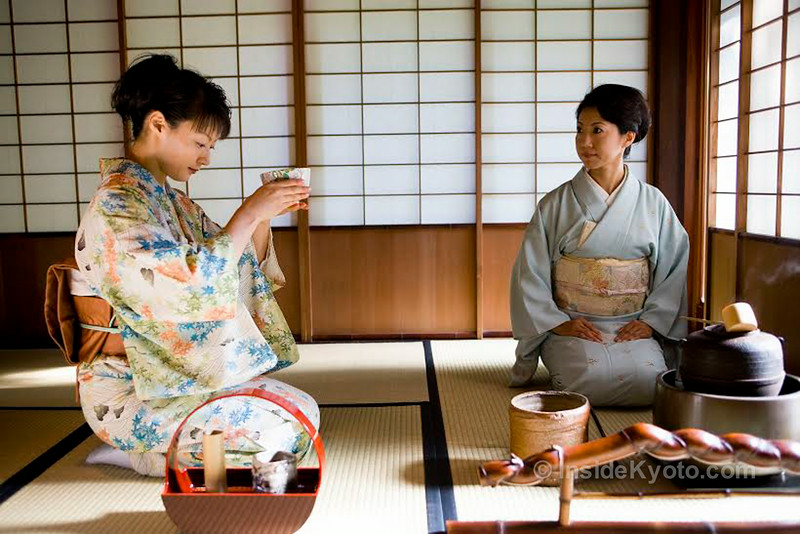
Japan is a country with unique customs and traditions. Its people lay a lot of importance on correctly following rules and regulations, not only do they follow these instructions at the workplace but also in public life and social settings. One such instance is the unveiling of the traditional Japanese tea ceremony. This isn’t just a mere sitting-down-and-drinking-tea affair. It is a lot more than that and has its origins steeped deeply in Japanese culture.
Image source – https://upload.wikimedia.org/wikipedia/commons/f/fa/Tea_Plantation_in_Nogami_Shibushi_2013.JPG
Described as Zen Buddhism in a cup, this is considered to be “the way of tea” and is called chadō or sadō in Japanese. The ceremony is performed for a group of five on tatami mats where visitors are expected to forget about the daily hassles of the world and surrender fully to the charms of the tea at hand. The host has to read up a lot on philosophy, art, history, and calligraphy to masterfully the art of serving tea.
With respect to durations, there are many types of tea ceremonies and one of the longer ones can last for four hours and include a meal and two rounds of tea! Respect and friendship are at the core of this ceremony and it is a way to soothe patrons into a world where tea is the cure for all. The ceramics with motifs are picked based on the likes of the visitors and each utensil and pot is placed at an angle which is best suited to patrons. No combination of utensils is ever used twice.

Image Source – https://upload.wikimedia.org/wikipedia/commons/0/07/Toshihana_tea_ceremony.jpg
When visitors arrive, they are led through a garden and asked to wash the dust off their hands. The host carefully, with graceful movements, washes each of the utensils and then uses a silk cloth to handle the hot pot with boiling water. Matcha, which is finely powdered green tea, is whisked with the hot water in a bowl. This bowl is then passed to the first guest who rotates it in two turns of 180 degrees so as to avoid drinking from the decorative portion of the utensil. They are then asked to wipe it before passing it on. To offset the bitterness of the tea, wagashi sweets are usually passed around. Once everyone has had a taste, the ceremony is brought to a close.

Image Source – https://upload.wikimedia.org/wikipedia/commons/3/31/2017_Kagoshima_sencha_-_second_infusion.jpg
It is important to arrive early and wear a kimono or dress modestly.

Image Source – https://upload.wikimedia.org/wikipedia/commons/c/cd/Japan_tea_ceremony_1165.jpg
Today, Japan tourism highlights this tea ceremony as one of the things visitors must experience in the country. When you head there, make sure to sign up for one of these blissful ceremonies and you will not just come back feeling refreshed with all the tea but will also get a taste of amazing Japanese hospitality.





Related Post
10 Best Places to Visit in April Outside India – Where Will You Go Next?
Places to Visit in January, February and March (2025)
Top 9 Honeymoon Places in India in 2025 for a Romantic Escape
10 Best Trekking Routes in Himachal Pradesh
Best Trekking Spots near Uttarakhand
Top Monsoon Destinations You Need To Visit To Witness The Magic Of Rains!
Exploring the Jungle Kingdom: National Parks Of Madhya Pradesh
Rishikesh: The Ultimate Destination for Adventure Sports and Activities
Striking Cable Car Rides in India
Must Do Activities in Kashmir